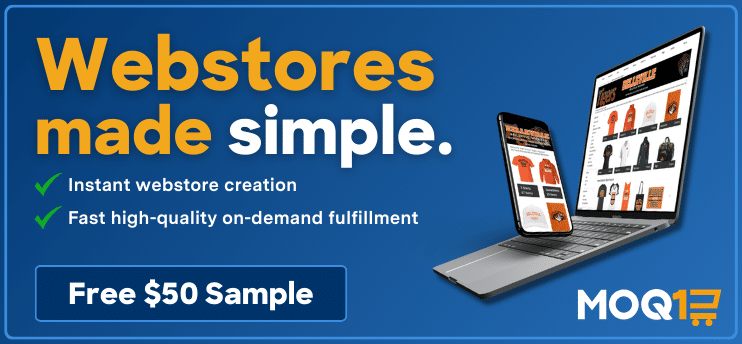Historically profitable industries, such as branded merchandise, have been through plenty of presidential administrations and are accustomed to familiarizing themselves with and preparing for potential policy changes following elections. Coming out of the 2024 election of Donald Trump, there is perhaps one core issue that supersedes the significance of all others heading into 2025: foreign tariffs.
- This, of course, will not be the first Trump presidential term, and 2017 saw the Republican leader initiate sweeping tariffs on Chinese imports, the majority of which have been kept in place by the Biden administration.
- However, based solely on messaging from his campaign, the president elect has plans for increasing those tariffs, repeatedly calling for a 60% tariff on all Chinese goods – at times raising that promise to a 100% or higher tariff – and since being elected, suggested a 25% tariff on goods imported from Mexico.
- He has even stated across-the-board tariffs of 10% to 20% on all foreign imports regardless of the country of origin.
Politically, these tariffs have the stated purpose of enforcing good faith behavior among America’s foreign trading partners while encouraging domestic manufacturing within the U.S.
Most U.S. economists agree, however, that there would be collateral economic pain at home, and that would very likely include the promotional products industry.
“From a business perspective, I can understand the intentions behind such measures aimed at strengthening domestic manufacturing and addressing trade imbalances,” says Thomas Goos, president of Image Source – PPAI 100’s No. 47 distributor. “However, the infrastructure and workers don’t exist to manufacture nearly all the products our industry offers to the market.”

Thomas Goos
President, Image Source
- The ramifications of these potential tariffs are something to be considered immediately. Unlike many political actions, the implementation of tariffs can happen quickly. What Trump is proposing does not require congressional approval, and the administration will have no legal obligation to provide advance notice.
Immediate Promo Reaction
Theoretically, the proposed tariffs have both short-term and long-term factors to consider. A user in the Promotional Products Professionals Facebook page, which has over 14,000 members, recently posed to the community “I’m curious if you are addressing potential tariffs with your clients,” which spurned a conversation with varied opinions and advice.
Ben Zhang, president and CEO of Greater Pacific – PPAI 100’s No. 68 supplier – is adamant that the greatest impact will be felt within American borders.
“The tariff is paid by we Americans, not Chinese factories nor China’s government,” Zhang says. “We learned that the tariff Trump imposed from his first term created terrible inflation for our U.S. economy. A 60% tariff will create even more inflation.”

Ben Zhang
President & CEO, Greater Pacific
Meanwhile, Jake Himelstein, president of BAMKO – PPAI 100’s No. 6 distributor – is already publicly stating that there will be a fairly simple cause and effect to such tariffs.
“This means one thing in the promo industry: The cost of your merch could increase,” says Himelstein.

Jake Himelstein
President, BAMKO
Dan Townes, president of Tennessee-based supplier Shepenco, which focuses on branded pencils, says that the tariffs would affect his company “not favorably for sure” as he doesn’t see “a public outcry to bring pencil manufacturing back to the USA.”
Ultimately, Townes can imagine a world where the tariffs, if enacted to the level that Trump has floated, would disrupt the traditional supply chain that the promotional products industry has operated within for decades. Sourcing challenges might tempt firms to skip suppliers in the process.
“The tariffs will increase [instances of] distributors abandoning the historical distribution channel and increase [instances of] sourcing direct,” says Townes. “The same would be true with end buyers. Should this be accurate, this may be the most severe long-term impact of the tariffs on our profession.”

Dan Townes
President, Shepenco
Himelstein cites raw materials, shipping and finished goods as casualties of increased prices with new tariffs and speculates that consumer spending will decline when those costs are being passed down to end users.
“The promotional products industry in particular is susceptible to market volatility and supply chain disruptions, as so much of the end-product originates overseas,” Himelstein says.
Vera Minot, owner of Arizona-based distributor Southwest Solutions, agrees with Zhang that Americans will likely carry the burden of the tariffs and told PPAI Media they, “would have a broad and, in many cases, painful impact on the promotional products industry.” But in terms of long-term ramifications, she predicts an escalation of a trend already happening in promo.
“We suspect there will be some interesting movement on the mergers and acquisitions side of this industry as various suppliers and distributors start to feel the burn, so to speak,” Minot says.

Vera Minot
Owner, Southwest Solutions
This assumption is shared by Townes.
“Smaller companies will look to become a part of ones with greater resources,” says Townes.
While this may seem like an issue for firms and suppliers that have become dependent on the manufacturing of foreign countries, Himelstein warns its reach will extend beyond that group.
“For companies that do not rely on foreign suppliers and produce products domestically, price hikes will not have an immediate impact,” says Himelstein. “However, if prices rise on products from most foreign imports, eventually price increases will trickle down to all consumer goods.”
Southwest Solutions began as an American manufacturer of ceramics, and Minot says that the company’s belief in the importance of domestic manufacturing “runs deep,” but she speaks bluntly on how she would expect such tariffs to play out.
“Harsh tariffs don’t have the track record of domestic manufacturing renaissance that so many hope for, and it’s American households and businesses that end up carrying the burden, not foreign exporters,” Minot says.
What Can Be Done?
The industry is in an odd purgatory currently, as it awaits the beginning of Trump’s term for answers as to the timing and severity of the tariffs. Himelstein is advocating to clients that this is a brief window of ordering with certainty.
“We’re urging you to arrange your shipments now to avoid potential price hikes and keep your marketing campaigns on budget,” Himelstein wrote.
However, this thinking will not be without its own domino effect. Peter Sand, chief shipping analyst at freight pricing analyst Xeneta, told CNBC that U.S. shippers will be frontloading imports before the tariffs are imposed, and Paul Brashier, vice president of global supply chain for ITS Logistics, says that increased container demand and vessel bookings will create increased freight rates and trucking and warehouse rates.
If the tariffs themselves result in price increases, Townes says there isn’t really any other policy better than transparency with clients. He also says that it’s possible that customers become willing to pay more for U.S.-manufactured products, as they showed with sustainable products in recent years.
“When justifying or explaining cost increases, the tariff just becomes another component that adds to the overall increase,” Townes says. “It will allow us to present salient points when presenting domestically and import-based similar or fungible products.”
Similarly, Minot advises firms to remember that it is the clients that are feeling the final trickle down of a price hike.
“Ultimately, all we can do is continue to support our clients, since they – the end user – are who will feel the most hit to their bottom line,” Minot says. “We at SWS feel fortunate that we’ve been training our customers to approach their marketing investments with a more intentional and holistic approach, which means ideally we should all be able to navigate tariffs with some measure of grace even in an unfair economy.”
When (And Will) This Actually Happen?
As things stand, there are no available details about the implementation of tariffs, as Trump is still putting together his cabinet. In a speech after being elected, Trump celebrated with a vow of “promises made, promises kept.”
Trump is one of the more unpredictable figures in recent U.S. politics. Economists are hoping that there will be some degree of nuance to the tariffs that he has discussed during his campaign, rather than a one-size-fits-all approach.
“It is an open question what level of tariffs will be imposed,” says Lars Jenson, CEO of shipping consultancy Vespucci Maritime. “Trump has mentioned anything between 100-500% and it is therefore completely unknown what will actually transpire. But that means significant uncertainty for U.S. importers.”
“The real wild card is the effective date of the tariffs,” adds Townes, who expressed belief that a large-scale overnight tariff increase would “destroy the economy.”
Townes also stated that Shepenco is preparing for a “15% phase-in” over the course of four years. He added the caveat that it is nearly impossible to be accurate with such predictions in this case.


